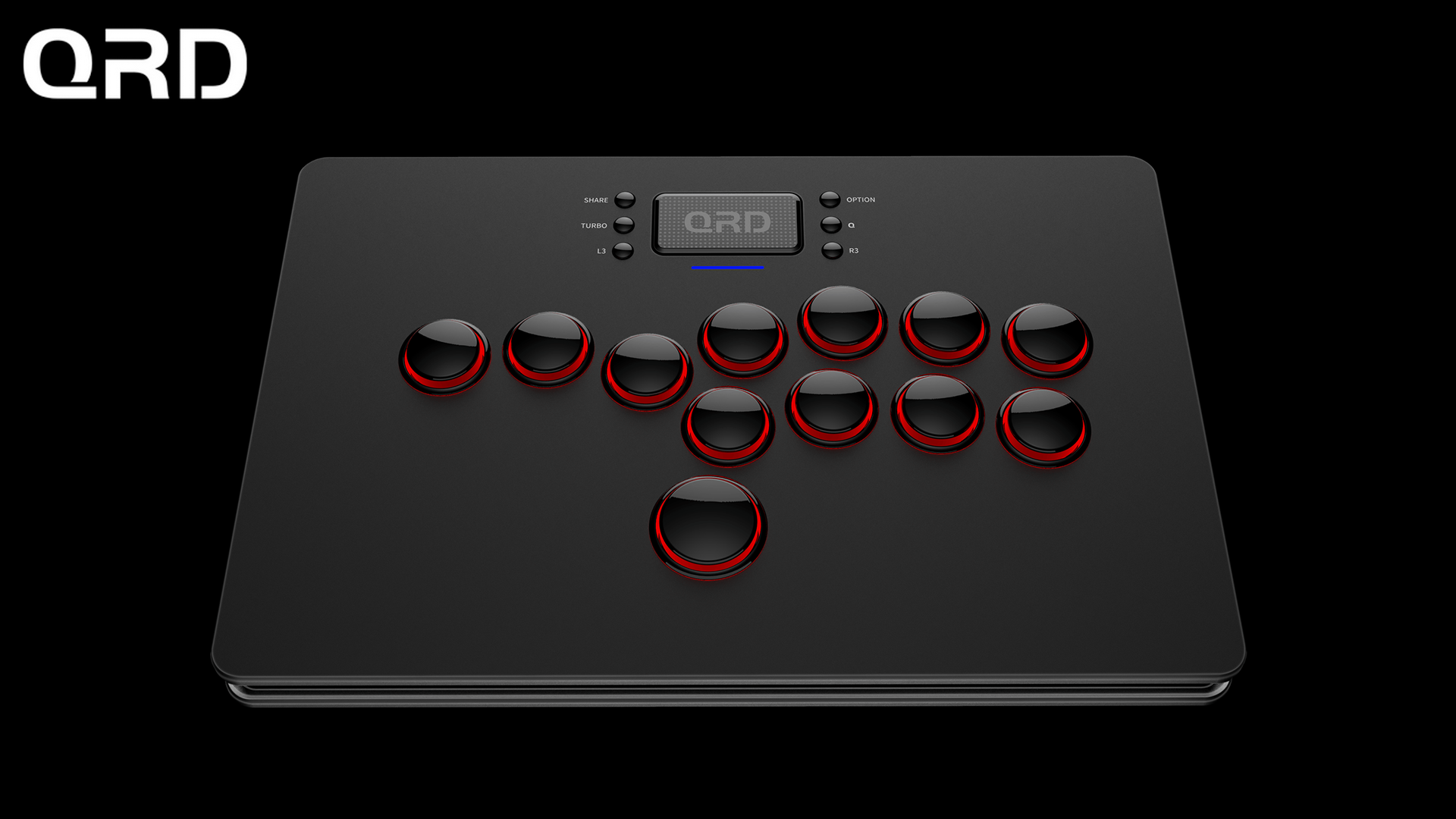QRD’s newest controller is finally here! The button-only leverless arcade stick, aptly nicknamed the Maestro, has hit stores and we were given the opportunity to review it.
With a design inspired by the Hit Box arcade controller, the QRD Maestro S3 is a sleek 12-button fighting/retro game-focused controller with a big emphasis in accessibility and customization.
So, is it viable? How does it measure up to other arcade controllers? Does it have RGB? (spoilers: it does). You’ll find answers for these questions and more in our review for the QRD Maestro S3.
QRD Maestro S3
Manufacturer: QRD
Price: $199.99

To someone whose first exposure to fighting games was on PC, specifically playing M.U.G.E.N with a keyboard, the idea of an arcade controller that does movement through button inputs is extremely exciting to me, which is why I jumped at the opportunity of reviewing the Maestro.
It’s embarrassing to admit, but I never got used to the joystick part of an arcade controller. They feel inconsistent at best, and being able only pull off moves 35% of the time in a genre as tight as fighting games simply didn’t cut it for me. It’s a personal skill issue for sure, but overshooting a motion only to jump and get hit by an anti-air is a miserable feeling.
There’s something very binary about how the fighting genre controls, and how you are either pressing a button/direction or you aren’t. Consistency is a big part of it, and there’s nothing more consistent than a button press, which is why movement feels so responsive when using the Maestro.

The idea of turning motions into the button presses they were always meant to be is fantastic, and even though QRD wasn’t exactly the first one to come up with this concept, their execution of the Hit Box controller is extremely good.
For those who don’t understand the difference, it means that a quarter circle forward, for example, can be achieved effortlessly by simply inputting down and right, as the diagonal is automatically interpreted by the controller, essentially giving you less chances to make a mistake and miss your input.
Inputs are probably the first barrier that players will come across when learning a fighting game, and even though the genre fits in a spectrum that can range from low-level Tekken play to tournament-level King of Fighters, it is always nice to see a barrier of entry get significantly lowered in a way that doesn’t feel cheap.

The Maestro S3 is a very stylish controller, featuring the all-black finish that QRD’s products are known for, as well as RGB lighting around its 12 buttons. It comes at a size of 300x200mm, making it portable without compromising ergonomics, which is exactly what you’d want when playing a local tournament or visiting a convention.
The Maestro uses QRD’s proprietary mechanical switches, which have a really unique and satisfying feel to them, being completely different from the more “hollow” button presses you’d get from a lower-end controller, almost simulating a very silent mechanical keyboard.
However, if you are a weirdo like me, and actually enjoy loud clacking sounds, then you’ll be happy to know that the Maestro’s switches and keycaps are hot-swappable, meaning that you can fully customize your controller to your liking, giving it any look or tactile feel you want.

Much like QRD’s other controller, the Spark N5, the Maestro cannot serve Xinput wirelessly, which means that the few fighting games that don’t accept Dinput by default, like Dragon Ball Figherz, will require software remapping, usually done through Steam’s controller settings.
That said, those who read my review for the Spark N5 know that compatibility is a big focus for QRD, which is why they developed the Blackpill adapter, not only enabling wireless Xinput but also PlayStation 5 and Xbox Series X/S support.
You can get the Blackpill slightly cheaper by buying a controller + adapter bundle on QRD’s website, and it seems to work with all of QRD’s products, so it’s a one-time purchase that will continue being relevant if you happen to be a fan of the brand. Having to pay extra for that function is a bit of a shame, but at the end of the day it’s another layer of compatibility that works retroactively.

Speaking of compatibility, the Maestro has quite a few settings to accommodate different devices or playstyles. Like other QRD controllers, the Maestro comes with a phone clip to allow for mobile gameplay, which also doubles as a Nintendo Switch holder, just in case you want some competitive Super Smash Bros on the go.
The controller also comes with different latency settings, which are made for specific eras of gaming. In general you would want the lowest possible latency for modern fighting games, but emulation or older games might require a slightly higher latency, which can be configured with a simple button press. You can also just set it to automatic and the controller will figure out what works best for your current platform, which is pretty helpful.
Part of what makes the Maestro a pro controller are its SOCD settings, which are essentially ways of resolving what happens when opposing directions are held at the same time. The Maestro features four different modes, one of them being SOCD 2, the mode required for tournament compliancy in the Capcom Pro Tour, as well as an EZ-Mode, which makes motions even easier to perform by cleaning up your inputs.

Overall, the QRD Maestro S3 is what happens when people passionate about fighting games create a controller. It comes with all the bells and whistles, it happens to be compatible with pretty much every platform out there when you include the Blackpill adapter, and it features quite a few accessibility features without stopping it from being tournament-legal.
QRD as always has gone above and beyond in creating a slick controller that manages to be both affordable and full of features, and if you are a true gamer you understand that the RGB makes it even more potent somehow.
The Maestro S3 can be purchased through QRD’s site, as well as their official Aliexpress and Amazon stores. You can also use the “MidYearSale” coupon on their site for a 15% discount, knocking the price down from $199 to $167 USD.
The QRD Maestro S3 was reviewed on Microsoft Windows using a unit provided by QRD. You can find additional information about Niche Gamer’s review/ethics policy here.



